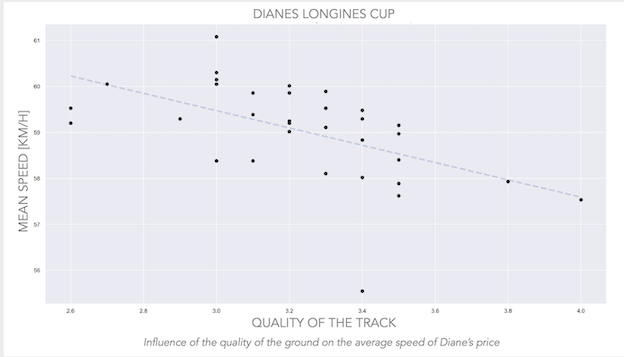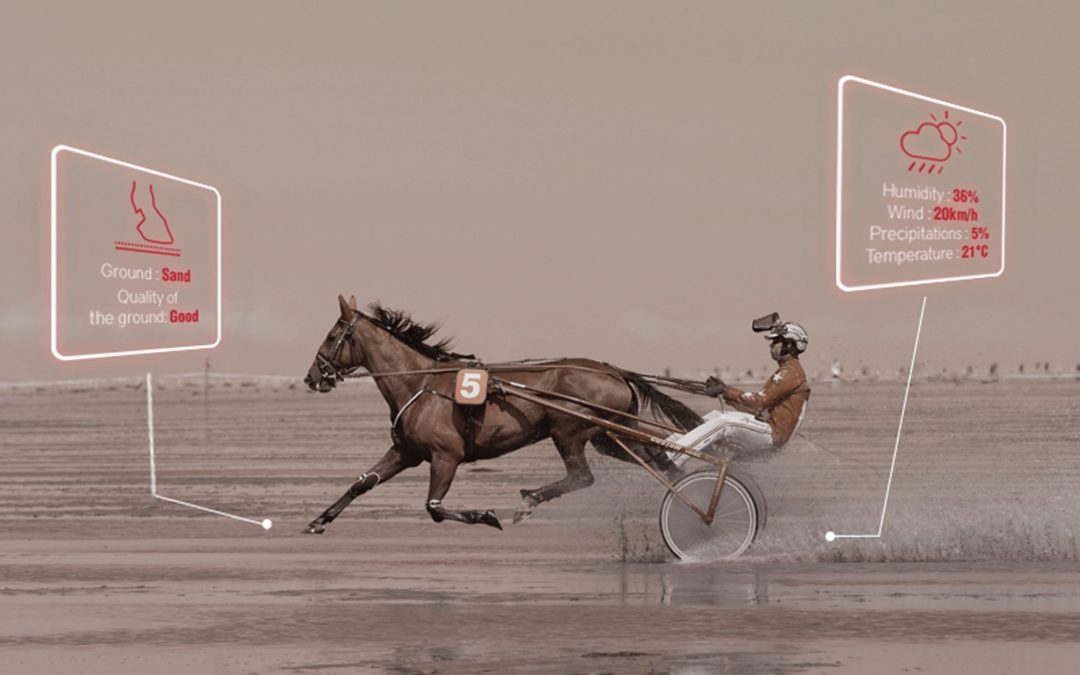The type of track has a strong impact on the performance of the horses. They are all affected by the condition and nature of the track on which they run, but they won’t be impacted in the same way. Each horse has one or more types of track on which he will perform at his best. Analysing regularly the speed performance of a horse on several types of tracks is interesting to better understand his physiological and athletics aptitudes.
How to analyse the training speeds of horses while taking into account the track type and its conditions ?
The track condition will mainly depend on its maintenance. For example, grass needs a very meticulous maintenance. Indeed it is necessary to water it regularly while paying attention to the weather, fertilise the soil, remove weeds, aerate the subsoil, mow the track, etc.
The rain and humidity in the air soften the soil and therefore the weather plays a fundamental role. Horses with a fairly large mass find it more difficult to run on deep tracks.
The average speeds on the different Prix de Diane depending on the condition of the track is a good example. We can notice a very big influence of the track condition, with a loss of almost 2 km/h on the average speed between a good and a very soft ground.

Measuring quality: the penetrometer
One of the conditions impacting the performance of racehorses and therefore the pronostic is the quality of the track. To determine the condition of the track, the racetrack stewards use a specific instrument : a penetrometer. It is an iron rod with a one-kilogram point in the shape of a shell which is used by dropping it at a certain height and then measuring the depth at which it has penetrated the ground. Three consecutive shocks are made two or three metres from the lice at ten key points on the track. All the data collected gives an average numerical value ranging from 2.2 to 6 or more. The penetrometric index is usually measured in newtons (N).
The day before the races, the stewards measure the state of the ground before noon and publish the index and the qualification on the website of France Galop. On the day of the races, they publish at 10am the qualification of the ground conditions. It takes into account the penetrometry index measured the day before and the evolution of the weather. Two hours before the meeting, the stewards decide on a new schedule for measuring the terrain.
Finally, if during the meeting the stewards notice a considerable change in the condition of the ground, they publish this news on the hippodrome.
Quantification of the influence of track on speed
We will use data collected at the Deauville racetrack to illustrate our point. The following graph shows the speed data. We can notice that the fiber-sand track is the fastest one. Fields rated good or close to good are generally the most conducive to the best speeds on grass. We also note that sticky, heavy and very heavy fields are generally the slowest. In Deauville, it is very interesting to train the horses on fiber-sand to give them the opportunity to experience full speed.
Training at over-maximum speed is very interesting and offering the opportunity to run at a high speed several times during the season is a great opportunity. It also allows to develop locomotor skills, coordination and balance at full speed. Working on heavier ground is also interesting to strengthen the muscles.
Ideally, heavy field work followed by trainings on fiber-sand track can allow the horse to do hard work and then easy movement, which from a perception of speed and morale point of view can be very good.

Moreover, monitoring horses on a daily basis on the same track but in different conditions is very interesting. It makes it possible to find out which horses are the most suitable for which type of terrain.
For example, a horse having a low speed on heavy track and a high heart rate is a horse who need to train more to race, while another may be more confortable.
Comparing the analysis of a horse’s heart rate with its speed on heavy terrain is key to better understand the athletic preferences and specificities of this horse. To better understand heart rate analysis, you may wish to refer to our other articles on heart rate.
Keywords: racetrack quality, horse track, influence of track on speed, racehorse speed, racehorse track


